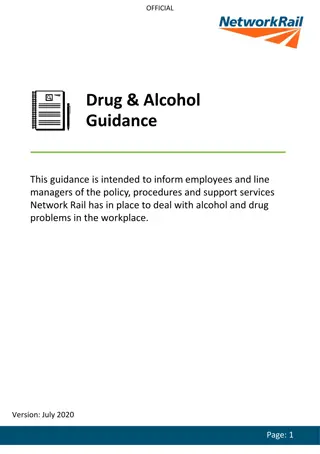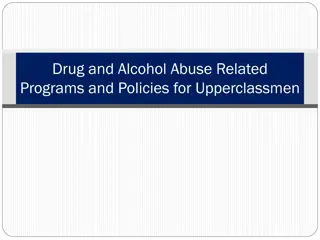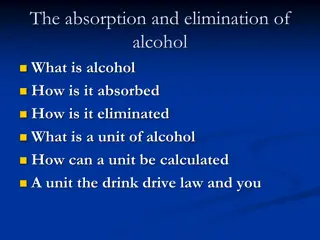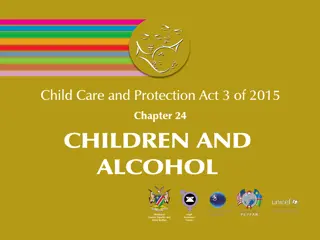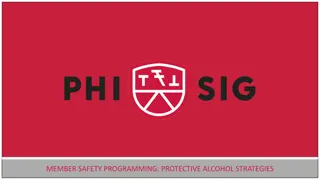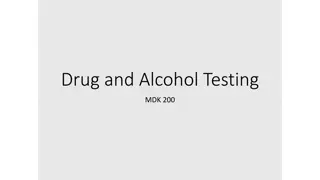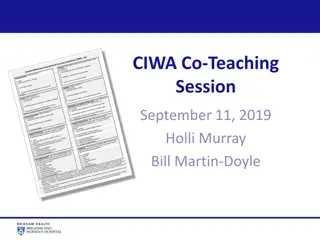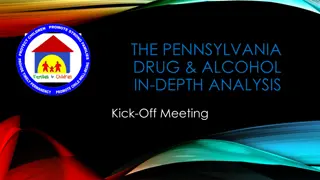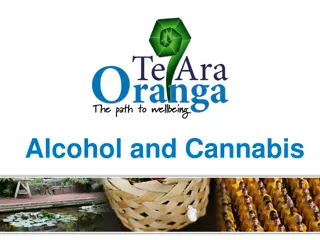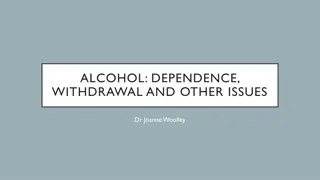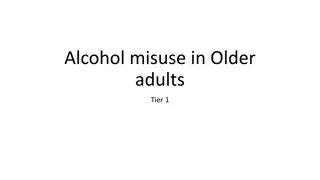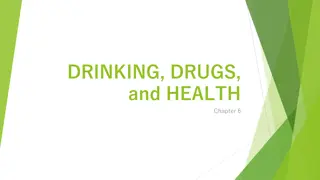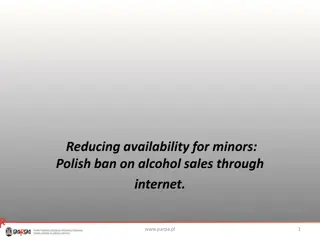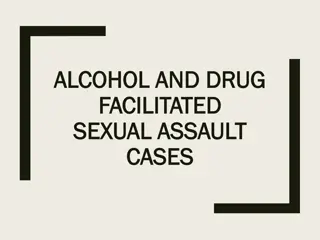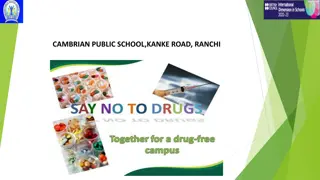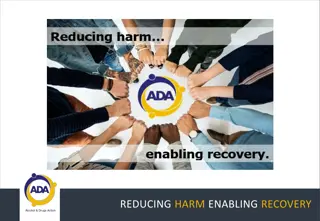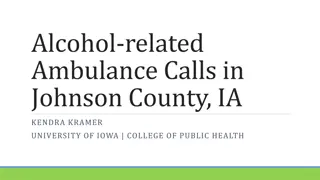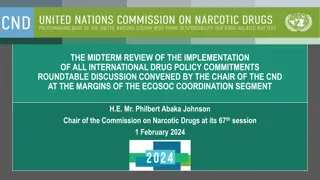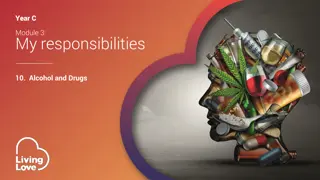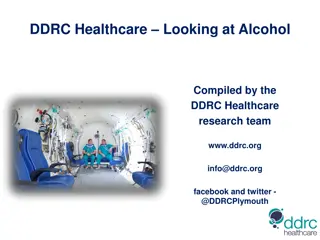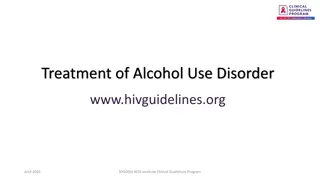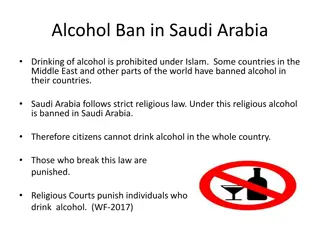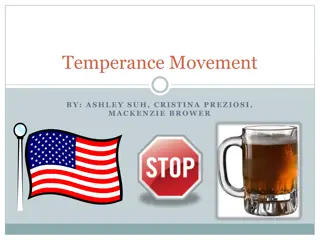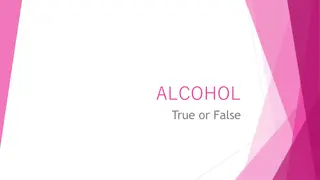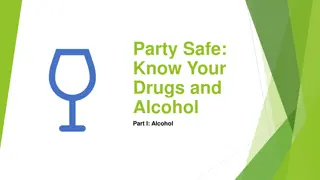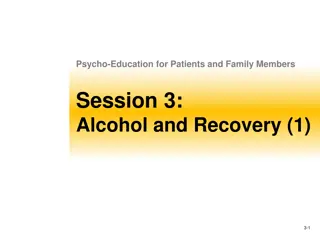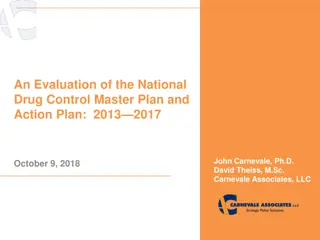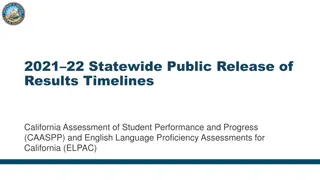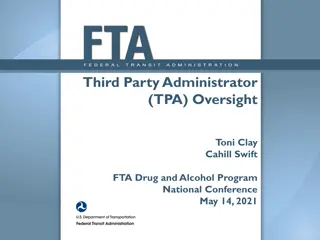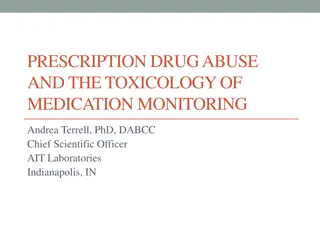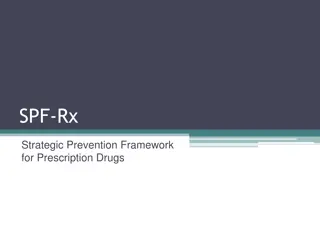Alcohol and Drug Policy Commission Statewide Strategic Plan Overview
The Alcohol and Drug Policy Commission (ADPC) in Oregon created a statewide strategic plan to enhance the effectiveness of Substance Use Disorder (SUD) services. The plan involves collaboration with 14 state agencies and aims to reduce SUDs, prevent deaths related to alcohol and drugs, address health disparities, and minimize the economic burden of substance misuse. Key objectives include understanding the rationale, framework, metrics, and overall impact of the plan.
Uploaded on Sep 16, 2024 | 0 Views
Download Presentation

Please find below an Image/Link to download the presentation.
The content on the website is provided AS IS for your information and personal use only. It may not be sold, licensed, or shared on other websites without obtaining consent from the author. Download presentation by click this link. If you encounter any issues during the download, it is possible that the publisher has removed the file from their server.
E N D
Presentation Transcript
ADPC Statewide Strategic Plan Overview Tori Algee ADPC Senior Policy Analyst Will Burchard, MS Alcohol and Drug Policy Research and Data Analyst
At the close of this informational meeting, you should: 1. Gain comprehensive insight into the rationale and methodology behind the development of the ADPC statewide strategic plan 2. Enhanced understanding of the structure and framework employed in crafting the statewide strategic plan Objective Objective 3. Comprehend the underlying principles guiding metric selection, their longitudinal comparison, and recognize their inherent constraints. 4. Grasp the holistic convergence of elements within the plan to foster positive outcomes and drive ultimate impacts.
The Alcohol and Drug Policy Commission was created to improve the effectiveness and efficiency of state and local Substance Use Disorder (SUD) prevention, treatment and recovery services for all Oregonians. Governor Brown ordered the ADPC to create a statewide strategic plan in collaboration with 14 state agencies who also have a hand in the SUD continuum. The statewide strategic plan was due to Legislature and the Governor on July 1, 2020 The Alcohol and Drug Policy Commissioners approved and submitted the statewide strategic plan on February 13, 2020 ADPC tasked with establishing Implementation Team(s) as well as an implementation plan by Spring 2020 Can you guess what else happened in 2020? Background Background and and Timeline Timeline
Participating State Agencies Oregon Health Authority Oregon Department of Human Services Oregon Department of Education Youth Development Division Higher Education Coordination Commission Oregon Youth Authority Oregon Department of Consumer and Business Services Oregon Department of Corrections Oregon Lottery Oregon Department of Housing and Community Services Oregon State Police Oregon Liquor Control Commission
The four Ultimate Impacts are: o Impact 1: Reduce SUDs and increase recovery 17 measures Ultimate Impacts o Impact 2: Reduce alcohol, tobacco, and other drug- related deaths 15 measures o Impact 3: Reduce alcohol, tobacco, and other drug- related health disparities -21 measures o Impact 4: Reduce the economic burden of substance misuse on Oregon s state budget 8 measures
Impact 1 : Reduce Substance Use Disorders and Increase Recovery PREVENTION Outcomes Baseline Benchmarks 2018 2019 2020 2021 2022 2024 Decrease past 30-day heavy drinking from 8.7% in 2018 to 7.8% or less in 20246 8.7% 8.9% 8.3% 8.6% 8.3% -- Decrease past 30-day binge drinking from 17.4% in 2018 to 15.7% or less in 20246 17.4% 19.0% 17.4% 18.0% 16.6% --
Example of two Strategic Plan measures with data issues Baseline Benchmarks Methodology change Diagnostic change Fentanyl not included 2017 2018 2019 2021 2022 2024 Decrease the percentage of Oregonians with a SUD by 20251 9.4% 9.5% 9.5% 19.4% Baseline Benchmarks 2017 2018 2019 2021 2022 2024 Oregonians who need treatment but don't receive 8.9% 8.8% 8.6% 17.3%
Impact 1 Summary Includes many measures: SUD prevalence, treatment access, recovery, youth substance use measures, alcohol use for population 18 and over, drug use. Certain measures had methodology changes in recent years, and we can no longer use older data. Data takeaway: One out of five Oregonians (19.4%) had a SUD in 2021. This was higher than the national rate of 16.5%. The share of Oregonians (17.3%) who need treatment but don t get it is almost as high as those who have a SUD, and is higher than the national rate (14.6%).
Impact 2: Reduce ATOD-related deaths Baseline Benchmarks 2017 2018 2019 2020 2021 2022 2022 2024 Decrease the rate at which Oregonians die from chronic alcoholic liver disease from 10.3 per 100,000 in 2017 to 10.1 or less per 100,000by 20258 10.3 11.4 10.9 12.5 14.8 10.2 10.2 Decrease the rate at which Oregonians die from drug overdoses (total) from 12.4 per 100,000 in 2017 to 10.4 or less per 100,000 or less by 202510 12.4 12.6 14.0 18.7 26.8 31.1 12.0 11.3 Other Impact 2 measures: alcohol-related deaths, intentional drug overdoses, tobacco-related deaths, 30-day cigarette smoking/youth, 30-day vaping/youth, cigarette and e-cigarette use for adults. Data takeaway: Two key measures - deaths from chronic alcoholic liver disease and deaths from drug overdose continue to show increases in ATOD-related deaths among Oregonians. As these figures continue to rise, the original ADPC benchmarks (developed before COVID pandemic and opioid epidemic) become less relevant.
Unintentional/Undetermined Overdose Deaths, Oregon Residents, Non-Hispanic Impact 3: Reduce Disparities 2018 2019 2020 2021 2022 American Indian or Alaska Native - Rate per 100k Total U U U 46.6 23 85.0 44 11 12 18 Asian and Pacific Islander S S S U U Data takeaway: Black or African American Oregonians are more than twice as likely to die from an overdose than all race and ethnicities. American Indian and Alaska Natives are almost three times as likely. <5 <5 <5 15 11 Black or African American 33.6 28 28.1 24 32.6 28 52.5 47 78.3 69 More than one race U U U 25 30 29.5 39 11 13 17 White 11.4 370 12.7 417 18.1 578 26.7 868 28.9 946 Other disparity measures in the plan: alcohol-related deaths by race and ethnicity, tobacco-related deaths by race and ethnicity, education/health/insurance measures, foster care numbers. Hispanic (ethnicity) 7.7 36 7.5 41 12.4 72 14.5 87 19.8 116 Total, all Oregonians 12.6 14.0 18.7 26.8 31.1 Source: CDC WONDER U = unreliable rate as count less than 20 S = suppressed for confidentiality, count of less than 5
Impact 4: Reduce economic burden The amount of state dollars being used to pay for problems related to substance misuse more than quadrupled from 2005 to 2017, consuming by the most conservative estimates nearly 17% of the entire state budget. Outcome: Increase the proportion of funding spent to prevent substance misuse, promote health and positive social outcomes, and treat and support recovery from SUDs from less than 1 of every dollar spent on substance use in 2017 to 10 or more of every dollar spent on substance use by 2025. Resources are not available to replicate the 2017 study. This makes it difficult to measure spending over time.
1. Strengthen Oregons state substance misuse system 2. Increase the impact of substance misuse prevention across the lifespan Statewide Goals 3. Increase rapid access to effective SUD treatment across the lifespan 4. Increase access to effective SUD recovery supports across the lifespan
Goal #1: Implement a statewide SYSTEM that ensures that substance misuse policies, practices, investments, and efforts are effective and result in healthy and thriving individuals and communities The problem: Oregon s efforts to prevent, treat, and help people recover from substance misuse have been deeply siloed, with little coordination among the state agencies and providers responsible for administering funding, strategies, and services. Solution: state agencies with major responsibilities for administering substance misuse services work together to build a comprehensive and sustainable statewide system.
Goal #2: Increase the impact of substance misuse PREVENTION strategies Goal #2: Increase the impact of substance misuse PREVENTION strategies across the lifespan across the lifespan The problem: Achieving the impacts identified in this plan reducing SUDs, preventing alcohol, tobacco, and other drug-related deaths and harms, and reducing health disparities will require a significant expansion of the current scope and reach of prevention across the state. Solution: ADPC facilitates the alignment of prevention efforts so there is a consistent statewide prevention strategy based on best practice
Goal #3: Increase rapid access to effective SUD TREATMENT across the Goal #3: Increase rapid access to effective SUD TREATMENT across the lifespan lifespan The problem: Oregon has some of the highest rates in the nation for substance misuse and SUDs, but some of the lowest rates of access to treatment. Solution: A statewide SUD continuum of care that is responsive, accessible, culturally informed, capable of serving priority populations, and able to meet emerging trends/issues.
Goal #4: Increase access to RECOVERY supports across the lifespan Goal #4: Increase access to RECOVERY supports across the lifespan The problem: Oregon lacks an infrastructure for collecting and reporting data on recovery services and there is an almost total lack of state processes and protocols for providing recovery supports what is known for sure about recovery supports in Oregon is that they are scarce. Solution: Begin tracking recovery outcomes and best practice. Duplicate, expand, and fund the programs that are achieving the desired outcomes.
Thank you for your time and attention


